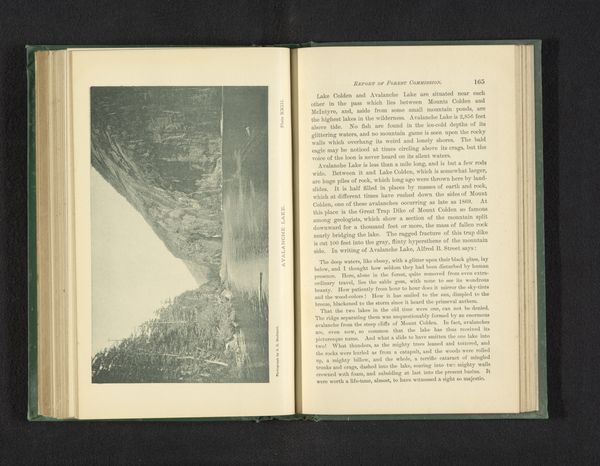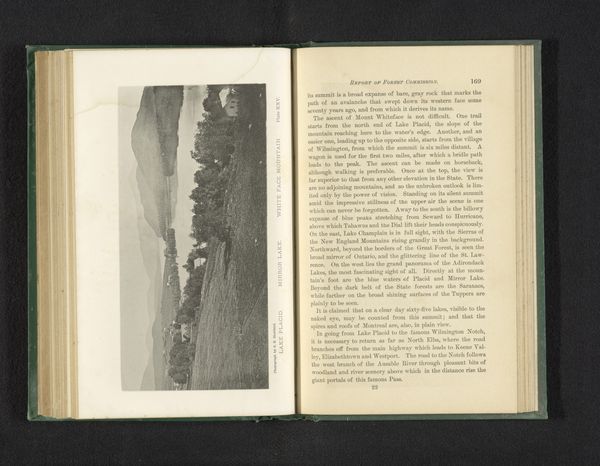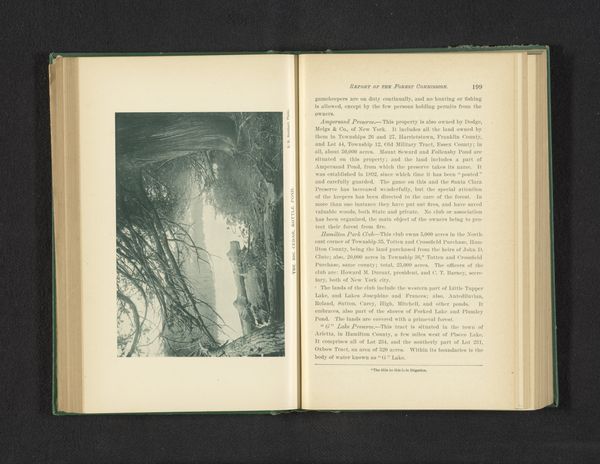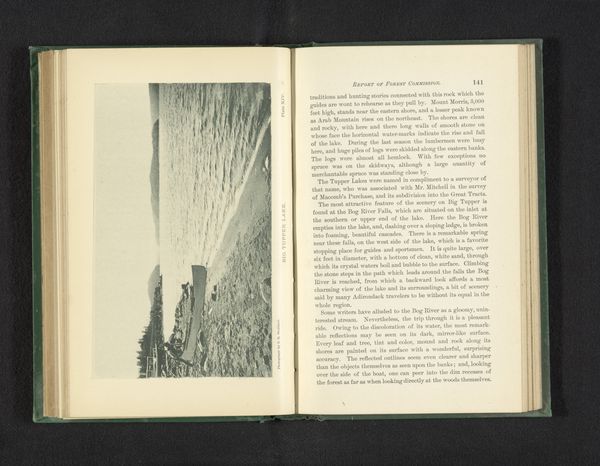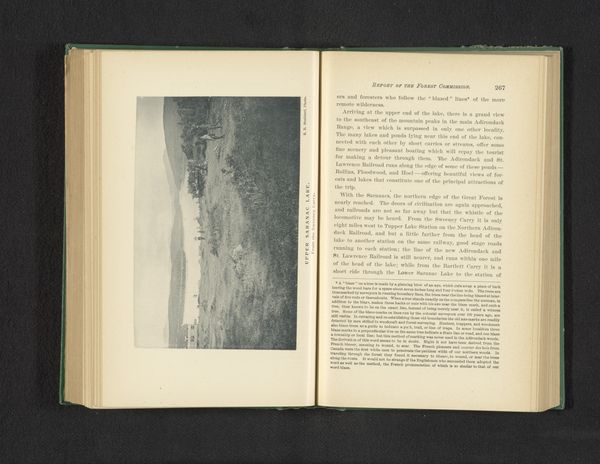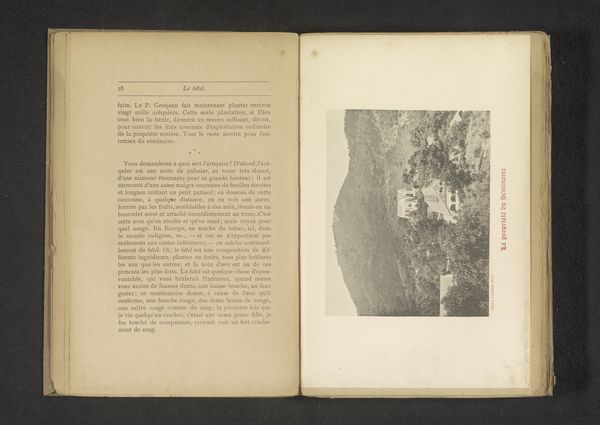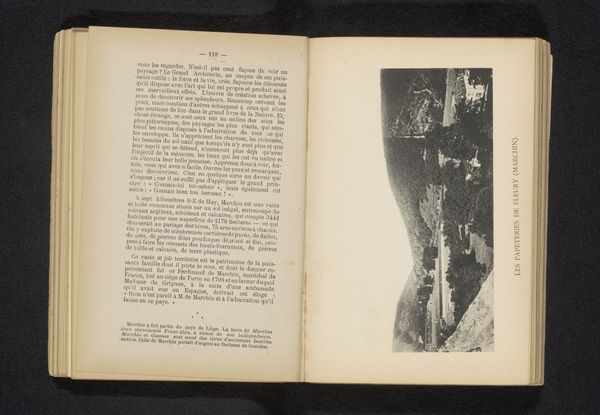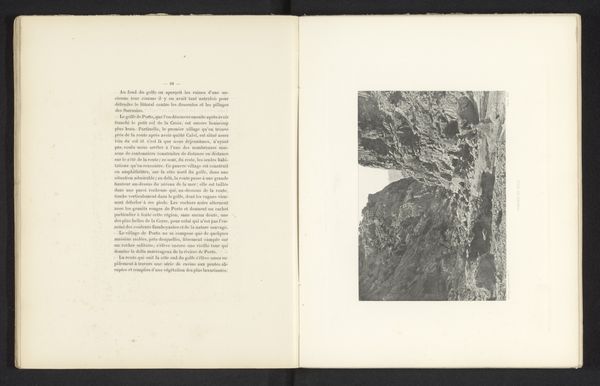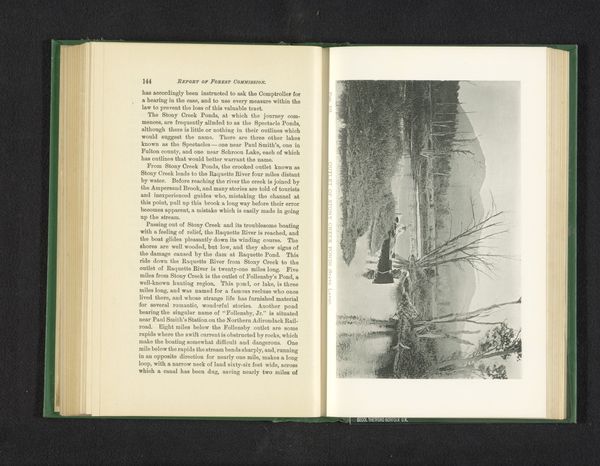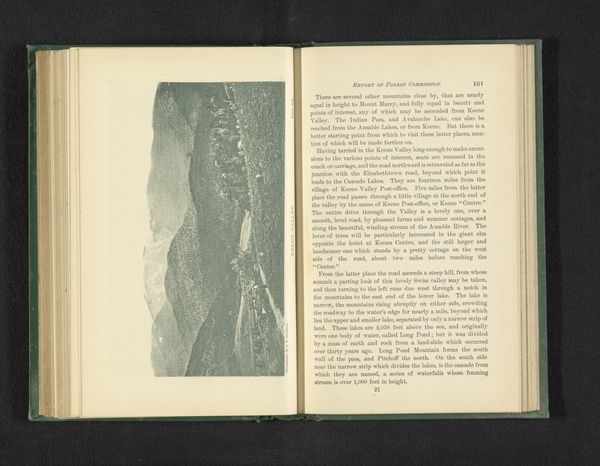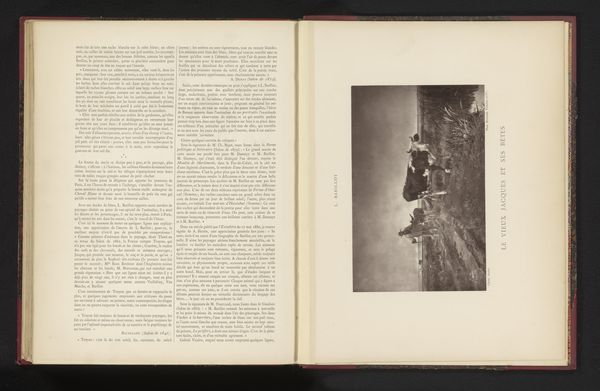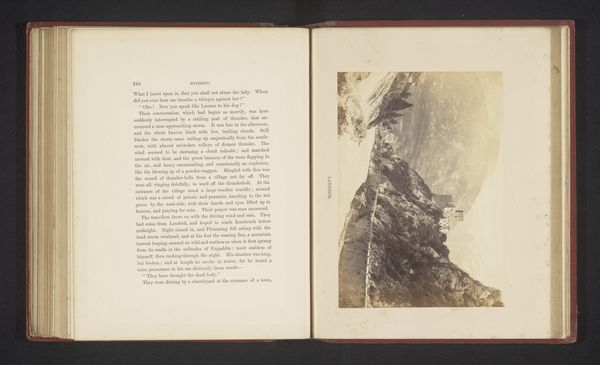
Dimensions: height 100 mm, width 161 mm
Copyright: Rijks Museum: Open Domain
Curator: Just look at this spread! This is a photographic print called "Trap Dike" from 1893, shot by Seneca Ray Stoddard. Editor: Wow, even reproduced like this, it feels imposing. Stark, almost severe in its contrasts. A really dramatic landscape, wouldn't you agree? Curator: Absolutely. Stoddard was a key figure associated with the Hudson River School, you know. Here we see an embrace of nature, sure, but filtered through this very modern lens of photography. He printed it in gelatin silver— or perhaps albumen—, achieving that sharp, almost hyper-realistic quality that makes it stand apart. Editor: Yes, and it's that photographic crispness that throws the composition into sharp relief. Look at the stark verticality—the sheer rock face sliced by that almost surgical diagonal line of the Trap Dike itself. The tones are quite beautiful, going from light grey near the top to deeper blacks down the ravine. You can really appreciate Stoddard's commitment to structure with the arrangement of shadows in such close proximity to the light. The tonal gradients here function together as one. Curator: It does evoke the sublime, doesn't it? The tiny strip of lake and vague suggestions of figures or boats there give you a sense of scale. You get an inkling of the insignificance of man in the face of these monumental forces of nature. Makes you think of our place in time...makes me question my outfit choice this morning! Editor: Indeed. Although that may speak to its broader ideological project more generally. If the aim here, in part, is to instill some degree of the sublime—perhaps it misses its mark with the inclusion of, as you pointed out, such visible markers. This seems at odds with the overall project. It leaves the image a bit flat. The tension in the shot falters from being too referential in subjecthood, rather than one that stands more on the tonality itself. Curator: See, I find that inclusion anchors it—makes it accessible and inviting, rather than alienating. But you're right, the tonal depth is key, especially in these early photographic processes. It's fascinating to consider what Stoddard was aiming for – documentation? Artistic expression? Or, more likely, a blend of both. Editor: The work is more intriguing than first anticipated—a successful blend of both! Curator: For me too. It is the landscape as both subject and symbol, wouldn't you say?
Comments
No comments
Be the first to comment and join the conversation on the ultimate creative platform.
